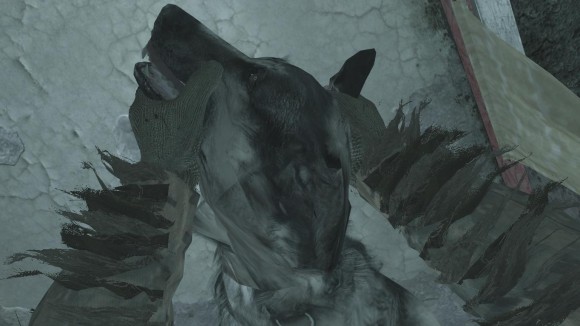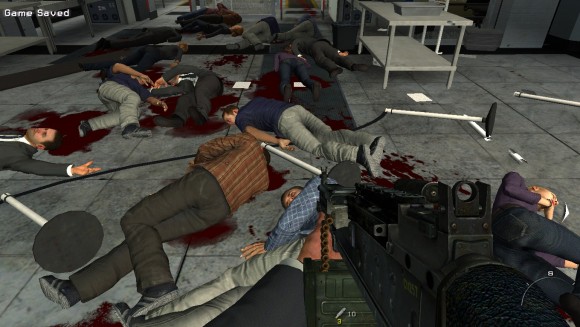The exigence for my look into the mass incarceration of African Americans comes, rather surprisingly, from pop culture. I first discovered that even the idea of such a problem exists when I read about film director Quentin Tarantino’s comments on this issue during the 2013 Academy Awards. Since he labeled the issue “modern day slavery” and was citing the cause as America’s drug laws, I initially thought to myself that Tarantino, in addition to being evidently liberal, was simply a bit crazy. However, within a few months, I had made a complete 180 on such a view as I discovered that the issue of mass incarceration of African Americans was also presented elsewhere in pop culture. The topic had been brought up or at least suggested in songs by Tupac, Jay-Z, and most recently, Kanye West.
Perhaps Kanye’s look at the matter was most striking, as he openly calls out the Drug Enforcement Agency (DEA) for teaming up with the Corrections Corporation of America (CCA), the US’s largest for-profit prison company, to lock up African Americans. Though this might sound rather outrageous at first, what was more surprising was the fact that the American Civil Liberties Union (ACLU) corroborated his claim with some rather shocking statistics: Today, there are more African American adults behind bars than there were enslaved in 1850, 11 years before the start of the Civil War. This has led to billions of dollars in profit for the CCA and other for-profit prisons. This problem has grown worse over time, as while incarceration rates were relatively stable during the early half of the twentieth century, between 1970 and 2005, our prison population grew by 700%. The US currently has the largest per capita incarceration rate of any country in the world, with over 2.3 million men and women behind bars. Not surprisingly, a large majority of them are from racial minorities. If these current trends continue, one in three African American males born today can expect to see time in prison sometime in their lives.
While these statistics show that there is definitely a problem, they also show that little is being done to remedy it. That is where I believe we must approach this problem like the social and societal illness that it is and attack its source: an endless cycle of poverty that afflicts way too many poor African Americans living in America today. The cycle is simple: They need food, but their poor upbringing means that they don’t have the skills and resources necessary in order to attain a good education and thus work a decent job. As such, in order to put food on the table, they turn to other means of earning money, such as selling drugs and stealing. This in turn leads to them getting arrested and jailed. After their sentence time is up, they simply return to the same poor neighborhood they got arrested in, and the cycle unfortunately just repeats itself. Even worse, while behind bars, they cannot vote, and as such cannot speak out meaningfully against the injustices they suffer in a society that leaves them to rot in an unbreakable cycle of poverty.
In order to stop this cycle and the mass incarceration it leads to, we must devote more of our resources not to arresting a disproportionate number of African Americans for selling drugs, for their chances of getting of getting arrested for such a crime are considerably higher than for Caucasians, but instead to improving the living conditions of African Americans throughout our nation. This can be done by improving their education in impoverished areas, their job opportunities, their health care, and other such health and general welfare needs. In the end, this will not improve their lives but also prevent more of them from being sent to jail, for there are only three factors that impact crime rate in this country: poverty, lack of education, and perception of inequality. By improving the lives of impoverished African Americans throughout this country, we can end the cycles of poverty and mass incarceration that have plagued our nation for too long. However, this starts with awareness of the problem and its root causes, which is where my persuasive essay finds its essential purpose.
Author Archives: Sounder
The Butterfly that Caused a Tornado
In the 2008 American fantasy drama film The Curious Case of Benjamin Button, eponymous protagonist Benjamin Button, voiced by the ever suave Brad Pitt, describes how due to one tiny event that spurs a whole chain reaction of further relatively small events, a main character ends up getting hurt by an automobile.
Exactly what the event was escapes my mind (I think said character forgot her wallet or something similar to that), but whatever the event was, it provides a perfect example of something I think we all have felt before. One tiny little event becomes a metaphorical first domino in a line of dominos and snowballs until eventually something much larger happens. Unfortunately, I cannot think of an example of this from my own life off the top of my head right now, but I do remember it happening before, and perhaps you have had this sort of chain reaction play out in your own life at some point in the past.
There is a mathematical term for this chain reaction caused by a single seemingly insignificant event: the butterfly effect. The name originates from the possibility that the flap of a butterfly’s wings in Texas could cause a tornado in Brazil. After all, who knows what effect the air molecules moved by a butterfly’s wings might have on the whole global weather system as a whole? You might think that such a tiny breeze causing a tornado in an entirely different hemisphere is absurd, but think again.
Have you ever noticed that the weather reports are never truly one hundred percent accurate? Have you ever wondered why this is the case? Well, it’s simply, really. Weather is a very complicated phenomenon. It is so complicated in fact that in order to truly predict it with guaranteed accuracy, we have to know the position, velocity, and acceleration of every single air molecule in the world, as well as everything influencing those air molecules. However, Heisenberg’s uncertainty principle states that we can never truly know both the position and velocity of any object with one hundred percent accuracy. The amount of uncertainty is inversely proportional to the size of the object. For example, for a baseball, we can reasonably calculate its position and velocity at any given time with negligible percent error. However, for something incredibly small such as an electron, the margin of error is so massive that we simply cannot know both its position and velocity at the same time. If we know one of these values, we cannot know the other one. As such, we can only really guess at where electrons are located inside an atom. This is why electrons are always drawn in science textbooks orbiting an atom’s nucleus in large clouds and not as individual particles.
Air molecules may not be as small as electrons, but they are still relatively small and still under the effect of Heisenberg’s uncertainty principle and as such are inherently unpredictable. Because being able to predict the weather requires knowing so much information regarding every single air molecule in the world, weather forecasts are inherently always going to be inaccurate to some degree. They simply rely on too many variables to be predictable. This principle is known as chaos theory and applies to a whole host of other events and phenomena, such as coin tosses, the stock market, traffic, and pretty much anything you can think of in your day to day life. (This is why random stuff happens and causes you to be late to class)
Earlier this month, a few very lucky men and women remarked on how they had bought a ticket for Malaysia Airlines flight 370 (which now sits somewhere in the Indian Ocean) but were late or had missed their flight for some other reason. Similar situations occurred on September 11th, 2001. By a tiny chance event, these men and women were spared being part of a catastrophic tragedy. Though their circumstances may seem miraculous, they are not alone. We are all citizens of a world where the butterfly effect and chaos theory can cause unbelievably impossible events to happen, such as an entire plane disappearing into thin air. However, rather than let this fact terrify us, we should be in awe of it, for it can lead to good things too. For example, in 1971, American ping pong player Glenn Cowan missed his team bus in Nagoya, Japan. A Chinese ping pong player took notice and invited Cowan onto his own team bus. While inside the bus, Cowan met Chinese ping pong champion Zhuang Zedong.
(Zhuang Zedong in 2007)
When the two got off the bus, they were swarmed with reporters (remember that is still 1971, during the Cold War). Later, the US ping pong team received an invitation to visit China. Slowly, US-China relations were being built, and in 1972, late US president Richard Nixon finally visited China himself, formally establishing US-China diplomatic relations.
(Richard Nixon in China in 1972)
It might be a tiny event, but thanks to the wonders of the butterfly effect and chaos theory, a single American ping pong player missing his bus in Japan in 1971 is precisely the reason why I am here today studying at Penn State and how you are able to read this blog right now.
Works in Progress- Persuasion and Advocacy
A long, long time ago, I asked Kyle King exactly what the civic issues blogs were supposed to be and be about. During his explanation, Kyle briefly mentioned that the civic issues blogs may tie in later to a persuasion and advocacy unit. At that time, I was still a bit in the dark and hazy about what to write about for my civic issues blogs. Since winter break had just recently come to an end and all three films that I had seen during that time (Frozen, The Wolf of Wall Street, and Fight Club) were controversial in one way or another, I had decided to focus on the portrayal of controversial content (especially violence) in the arts (usually films and video games). This past Wednesday though, when the persuasion and advocacy unit finally came around, I realized that it may be difficult to develop my initial ideas for this particular unit, since it focuses on policy. Fortunately, as Kyle has noticed many times, I have a knack for coming up with unusual connections between very unlike concepts, and this time, it was no different.
My persuasion and advocacy project is likely going to focus on the protection of our first amendment rights, in particular both literal and metaphorical free speech. As I noted in my civic issues blog this week, such violations against free expression are common in other parts of the world. However, I am going to focus on violations right here in America, where unfortunately they go more unnoticed. Some examples include the following:
In the aftermath of 9-11, Americans were very galvanized for some form of revenge, even if they were not entirely sure where to vent their frustrations. George W. Bush decided to use Iraq as a target for this frustration, claiming that Osama bin Laden and Saddam Hussein had close ties and that Saddam had weapons of mass destruction even though the latter was not true, and Osama and Saddam hated each other. Journalists who tried to argue against possible action in Iraq were immediately fired, blackballed, and out of a job for prolonged periods of time. While I know that 9-11 can be touchy subject for many, I firmly denounce our actions in Iraq and believe that targeting those who argue against our unnecessary brutality in that country is simply wrong.
Voter ID laws that would require all voters to show photo identification is legislation strongly proposed by Republicans, who claim that they want to stop vote fraud. However, a lot of Democrats argue that this is a political move to limit Democrat power since minorities and the less wealthy tend to support Democrats but sometimes lack the resources for proper photo ID. Without photo ID, some of this nation’s poor and minorities will never have their voices heard.
As noted by Tupac Shakur, Jay-Z, Kanye West, and Quentin Tarantino, the modern drug laws in America, started by none other than Richard Nixon, focus more on putting African Americans behind bars rather than attempting to destroy the drug economy. In fact, more African American adults are currently behind bars than were enslaved in 1850 (The Civil War started in 1861. Source: http://rapgenius.com/Kanye-west-new-slaves-lyrics). When African Americans are behind bars, they lose not only their freedom but also their metaphorical voice.
Please let me know what you all think! Thanks! If anyone wants to work with me together on this (I will switch over to your topic if I can connect with it), please let me know.
First Amendment Rights Are for Losers
In light of the introduction of our persuasion and advocacy unit and its possible tie-ins with our civic issues blogs, I thought to myself, “How could I branch off from my civic issues blogs and use them as the springboard for persuasion and advocacy?” Of course, I had the choice of starting my project from scratch, but having already made some headway into the civic issues blogs and seeing some of my classmates rather passionate about expanding upon their civic issues blogs through persuasion and advocacy, I thought to myself, “There must be some way to tie this into my civic issues topic!” Unfortunately, as I read through the driving questions featured in my very first civic issues blog, I realized that a direct tie-in might be difficult. The persuasion and advocacy unit focuses on attempting to influence policy change, and that is not necessary for the US in regards to portrayal of controversial subject matter, since the US is one of the most liberal states in this field. However, there are plenty of other states that are far more restrictive on free expression in the arts, often to humorous and sometimes disturbing degrees. By looking at where first amendment rights in regards to free artistic expression have fallen elsewhere in the world, we can gain a better sense of how privileged we all are to live in the US and what dangers threatening our rights we should all be wary of.
One of the more egregious places where free expression is suppressed is China. Despite China being my birthplace, I find the country a rather despicable place to be in. The government has not loosened up that much since the days of Mao Zedong’s harsh rule. Restrictions on first amendment rights are rampant throughout the country. Facebook, YouTube, Twitter, Blogspot, Change.org, and plenty of other such sites are all blocked. Artistic expression is also under tight control. In 2002, the computer strategy game Hearts of Iron (set in WWII), was banned since it depicted Tibet, Manchuria, and Sinkiang (all nowadays part of China) as independent states and depicted Taiwan under Japanese control (which is ironic since the island was under Japanese rule during WWII).
In 2005, the absurdity of China’s censorship became even clearer when it banned a soccer computer game (Football Manager 2005) simply because it featured Tibet as a free country.
That same year, China banned the American crime film The Departed simply because in the film, actor Jack Nicholson remarks (somewhat sarcastically) on the Chinese potentially nuking Taiwan.
(Jack Nicholson)
More recently, China just lifted a 14 year ban on all video game consoles, believing them to be deleterious to the country’s people. This is ironic considering that China helps build a lot of video game consoles, though this comes at quite a cost. In 2013, workers at a factory building Xboxes threatened protest via mass suicide if they were not given better working conditions (The factory already had suicide nets in place at the time. I unfortunately lost the link to this news story.).
The Middle East is another place of harsh censorship of free expression in the arts. Anything related to Pokemon at all was banned in Saudi Arabia 2001 due to “promoting Zionism and gambling.” The 2013 fighting video game Injustice: Gods Among Us was banned in the UAE simply due to having the word “god” in its title.
In both the UAE and Saudi Arabia, the 2007 shooter video game Call of Duty 4: Modern Warfare was banned for depicting violence against Islamic soldiers.
Even more surprisingly, the UAE banned the 2012 shooter video game Spec Ops: The Line simply for depicting a post-catastrophe envisioning of Dubai.
In Iran, the 2011 shooter video game Battlefield 3 was banned for depicting violence against Iranian soldiers, and the 2007 American action film 300 was banned for negative depiction of the ancient Persian people (I will admit though that I found the film to be rather racist, especially given actual historical facts and circumstances regarding ancient Greece and Persia.).
Perhaps most astoundingly of all, a multiplayer map (Favela) in the 2009 shooter video game Call of Duty: Modern Warfare 2 was temporarily removed and edited simply because it featured a picture frame with the words “Allah is beautiful and He loves beauty” in Arabic.
The picture frame is located in a bathroom, and in Islam, saying anything about the faith in a bathroom is forbidden. Ironically, in a game where you can freely massacre innocent civilians in an airport, what raises controversy is Islamic praise on a picture frame in a bathroom. Also, in Modern Warfare 2, the player is given evil American enemies to kill. Strangely though, no one in the US ever got riled up over depiction of violence against American soldiers. Overall, it appears that Western depictions of Islam and anything negative and/or violent regarding the Middle East are highly frowned upon in the region.
Around the world, similar restrictions on free expression in the arts have always been occurring, especially recently. The 2009 American science fiction film District 9 was banned in Nigeria for supposedly being xenophobic and racist toward Nigerians.
Although Nigerian gangsters are common antagonists in the film, I personally hardly felt it was meant to disparage all Nigerians. The 2001 American comedy film Zoolander was banned in Malaysia due to its depictions of the country’s poverty and sweatshops.
In Indonesia, the 1993 American historical drama film Schindler’s List is banned simply for being sympathetic toward Jews.
The 2008 American action film Rambo is banned in Myanmar due to negative portrayal of Burmese soldiers.
Ironically, the film is praised by those in opposition to Myanmar’s oppressive military, a fact that director and lead actor Sylvester Stallone personally remarked upon positively.
(Sylvester Stallone)
In Russia, the 2006 American comedy film Borat is banned simply for being “offensive,” and the 2007 American biography film Charlie Wilson’s War is also banned for depicting Soviet brutality during the Soviet Union’s occupation of Afghanistan.
In Samoa, the 2008 American biography film Milk, which depicts the life and assassination of gays rights advocate Harvey Milk, is banned due to the country’s homophobia.
In Ukraine, the 2005 American horror film Hostel is banned for depicting Eastern Europe as a hotspot for abductions and subsequent financially inspired torture and murder.
The 2009 British comedy film Bruno is also banned there for homosexual themes.
In Kenya, playwright Ngugi wa Thiong’o was imprisoned for over a year due to his plays addressing the dark side of the Kenyan regime.
(Ngugi wa Thiong’o)
Finally, on a slightly more frivolous note, the 2012 American adventure film The Hunger Games is banned in Vietnam for “excessive violence.”
Every once in a while, some form of free expression in the arts arouses controversy here in the US. While some Americans, including myself, may find it a bit ridiculous at times how sensitive people can be, it is important to remember that we live in a very free and liberal country when it comes to our first amendment rights. In a lot of other countries, the government controls all, and anything that it does not like will be banned, even for the most seemingly stupid and pathetic of reasons. This censorship highlights the excessive nationalism, homophobia, religious intolerance, and paranoia that plague too many world leaders. While some may claim that such extreme governance is limited to dictatorships, I warn against such dismissal of the threat. Here in the US, the government has done plenty of controversial things in the past and will likely continue to do so as long as the US is a functioning state. While it has so far done little to repress first amendment rights, we must always be wary of the possibility of further censorship while reminding ourselves how blessed we all truly are to live in a country where free expression can be a real thing.
Sources:
http://www.smosh.com/smosh-pit/articles/weird-reasons-video-games-were-banned-around-world
http://en.wikipedia.org/wiki/Hearts_of_Iron
http://callofduty.wikia.com/wiki/Call_of_Duty_4:_Modern_Warfare#Trivia
http://en.wikipedia.org/wiki/Spec_Ops:_The_Line#Regional_ban
http://en.wikipedia.org/wiki/Controversies_surrounding_Call_of_Duty:_Modern_Warfare_2
http://en.wikipedia.org/wiki/List_of_banned_films
Theatre in Your Life: Second Edition – Robert Barton and Annie McGregor
http://en.wikipedia.org/wiki/Ng%C5%A9g%C4%A9_wa_Thiong’o
Ode to Platypuses!
A long, long time ago, back during the ever so distant days of high school, I performed in the annual school musical. Now, if any of you find picturing me in a musical to be different, please keep in mind that my roles were minimal, and having to memorize lines was no problem for me due to the dearth and sometimes nonexistence of lines for me to memorize. Now that we have gotten that out of the way, let us turn our attention to what I find truly epic and interesting. Since I went to a Catholic high school during my junior and senior years, we would always hold hands and pray in a gigantic circle before every performance. One of the more interesting prayers that we did was the platypus prayer.
While most of its details have now escaped my mind’s grasp, from what I can remember, the platypus prayer remarked on how odd platypuses are and how they seem to be hodgepodges of different body parts from numerous different animals. I do not remember how this was worked into the form of a prayer, but I do find it very interesting how humans view platypuses. Most of us see them as strange beings that are very alien to the world compared to all the other animals alive today, especially when compared to modern mammals. Europeans were amazed when they first encountered the platypus in 1798. When the first platypus specimen arrived in Britain, zoologist George Shaw thought that someone had sewn a duck’s beak onto some form of beaver-like animal.
George Shaw
He even started to cut up the specimen with scissors in his search for stitches. Robin Williams even joked that God was stoned when He created the platypus.
Robin Williams
However, all this is an illusion created by our own very egocentric minds. In reality, the world has been used to platypuses for 125 million years. The earliest known relative of the platypus is Teinolophos from Australia, followed by Steropodon from 110 million years ago in Australia.
Steropodon
As you can see in this reconstruction of Steropodon by paleoartist Nobu Tamura, the platypus form was already well developed even 110 million years ago. although odd, the platypus body plan is nothing new to this world. Meanwhile, we humans, the strange hairless bipedal apes who somehow manage to survive outside normal primate habitats, are the truly foreign creatures of this world, having been around for only 200,000 years, and at most only 8 million years if you include all bipedal primates. In fact, the modern platypus species itself has been around for 9 million years, already at least a million years older than even our earliest bipedal ancestors.
As my deliberation group learned this past Monday, being mostly Schreyer Scholars and Paterno Fellows, we are rather in a bubble, as we quickly found out when we realized that none of us knew anything about trade schools. In a way, all humans are in a bubble. We are so used to our own cultures, perceptions, experiences, and values that anything that falls outside of them, such as “strange” creatures such as platypuses, we immediately label as weird and view in a different light even if what’s “weird” has already been around for hundreds of millions of years longer than we have. This innate egocentricity is something that we should try our best to overcome while reminding ourselves that it also makes us all human and gives us all one common trait that we can feel united under.
Games Games Games Games Games
This past week saw the end of the wildly popular app/mobile game known as “Flappy Bird.” Ultimately, the app’s creator Dong Nguyen simply could not deal with the fact that his little game that he had intended for short relaxing breaks had become an addiction for many and such removed it from app stores. Nor could he cope with the sleep loss he suffered after the game saw huge success. While some may consider this quite a shame, it does not make that much of a difference in the grand scheme of things considering the hugely vast number of games out there for us to play in today’s world where there is supposedly an app for everything.
But why do we play games? “Because they’re fun.” Fair enough, I suppose. But on a deeper, more instinctual and primal level, why do we play games? It is a question that not many have delved into. In order to investigate this question, we first have to define what a game is. In almost all cases, a game is an event where a player competes with one or more other players, a CPU (central processing unit, essentially the “brain” of your computer, your smart phone, your video game console, etc.), or some other opponent or obstacle in order to attain an end goal. In “Flappy Bird,” a player competes against the game’s level design and game mechanics in order to obtain as high a score as possible. In football, a player competes against the opposing team in order to score as many touchdowns, field goals, and/or two point conversions as possible. In chess, a player competes against another player in order to try to put the other player’s “king” piece in “checkmate.”
But look at the definition of a game again. Based on that definition, is not life also a game? In life, does not one also compete with one or more other “players” (competitors in the job market, other students in class, etc.) and obstacles in order to attain an end goal (financial security, a dream job, the highest grade in the class, etc.)? If we assume that the answer to this question is indeed yes, then it soon becomes very clear that life is a very terrible game that few would actually pay money for. In life, we do not know how the decisions we make now will affect is in the future and how well they will lead us on or off the path to attaining our end goal. Even worse, life is full of so many random variables that it is very difficult to predict where life is going to take us and how we should act to circumvent the obstacles we encounter in life.
However, in “Flappy Bird,” one knows immediately if their actions will reward them with success or failure. One does not have to wait several decades to see whether or not they “won” the game (we will define winning here as reaching a particular high score that is up to the player’s discretion). And since “Flappy Bird” runs on a set game engine with set game mechanics and coding, there are a lot fewer unpredictable variables one has to worry about when playing “Flappy Bird.”
In the end, this is why we play games. Life is one big game that spans (hopefully) decades, and one never knows how close they are to “winning” the game. As such, games provide us a way to simulate the competitive nature of life while having instant or rapid results to our actions and limitations on how random variables can affect us. This simulation of life that is both easier and more immediately pleasing helps us to cope with the stresses of real life and remind ourselves that life too “is just a game.” So the next time you play any game, remind yourself that if you can beat it, then life should be no problem for you.
“Blood, Guts, and Video Games”*
Unless you live under a rock, you are probably familiar with the popularity of video games in modern day society. However, the video games you are probably familiar with are likely very different from the kind older folks grew up playing. One big difference is the level of mature content present on-screen. In recent years, numerous games have attracted quite a lot of controversy over their presentation of violence, sexual situations, substance abuse, and other such sensitive topics. Arguably the one that media rambles most about is violence.
Violence has generally always been a part of video games, in one form or another. In one of the earliest video games, Donkey Kong (you can play it here: http://www.freekong.org/), the protagonist you control can be killed by flames, heavy objects bouncing around the screen, a fall to his death, failure to complete the game on time, or the eponymous giant gorilla Donkey Kong.
Donkey Kong (1981)
While death is not necessary to show that one has failed in a video game, it certainly helps to establish the concept well and easily and so it was and generally still is the most readily chosen option for representing failure in a video game. However, due to limited technology at the time, early depictions of death were cartoonish and simple and did not raise any fuss.
Controversy over video game violence first started with the 1976 game Death Race.
Death Race (1976)
In this game, you run over innocent pedestrians to score points. Although the graphics are too simple to be realistic at all (pedestrians are merely rendered as stick figures), the very concept of running over innocent pedestrians in a video game unsurprisingly provoked the more sensitive in society. In 1982, the game Texas Chainsaw Massacre allowed players to kill innocent civilians, this time with slightly improved but still simplistic graphics and no blood, but unlike Death Race, no real controversy was raised.
Texas Chainsaw Massacre (1982)
It appeared that just six years of games and a link to a popular film allowed Texas Chainsaw Massacre to get away with killing innocent civilians.
In 1986, the presence of actual blood and gore first appeared and (not surprisingly) attracted a lot of attention. The game Chiller provided players with an utter and very bloody torture simulator, and many arcades refused to support the game.
Chiller (1986)
By 1987, the game Death Wish III failed to attract any attention for allowing players to use a rocket launcher to turn both enemies and prostitutes into bloody piles, as violent shooter games with action movie connections or at the least the spirit of an action movie had already become the norm.
Death Wish III (1987)
The 1987 game Barbarian: The Ultimate Warrior did raise attention though for depicting brutal combat and decapitation.
Barbarian: The Ultimate Warrior (1987)
Keep in mind the video games at this time were still viewed as children’s playthings.
By 1988, new technology allowed for more realistic depiction of violence. The 32-bit (which was quite revolutionary at the time) video game Narc allowed players to blow human enemies into bloody bits, but the attack dogs in the game only shrink down and run away when shot.
Narc (1988)
In many recent Call of Duty games, players kill dogs in realistic and bloody manner, but yet no one seems to bat an eye.
Breaking a dog’s neck in Call of Duty 4: Modern Warfare (2007)
This would not be the first time that society is seen having relatively strange and ironic standards for what is considered decent.
By 1992, CD-ROMs were all the rage. The 1992 game Night Trap featured live action video and was not particularly gory but led to cries for censorship for its realistic depiction of violence against women.
Night Trap (1992)
Also in 1992, the game Mortal Kombat was released.
Mortal Kombat (1992)
The depiction of bloody fighting and brutal killing moves often featuring decapitation or dismemberment led to lawsuits attempting to censor or strictly regulate the game. Nevertheless, the series has continued to be popular and released its latest game in 2011, which was banned in Australia, Germany, and South Korea for its violence. Mortal Kombat’s controversy led to the establishment of the Entertainment Software Rating Board (ESRB), who now put a rating on all games. Since some of the ratings restrict purchase of games to those 17 or 18 and over, this ended the view that video games were merely children’s playthings, and now games could be free to be ever more violent without the worry of attracting attention.
In one of the more notable instances of video game controversy, the 1993 first person shooter (FPS) game Doom attracted a lot of attention for supposedly causing violent behavior in and serving as a “training ground” for Eric Harris and Dylan Klebold, the murderers behind the 1999 Columbine massacre.
Doom (1993)
For a time, people were scared of FPSs and feared that they may be turning kids into violent killers. In 2011, similar fears were raised after Anders Behring Breivik went on a terrorism rampage in Norway that left 77 dead. Breivik supposedly used the game Call of Duty: Modern Warfare 2 as training for his acts of terrorism, and Norway subsequently banned 2011’s two most popular FPS games Battlefield 3 and Call of Duty: Modern Warfare 3 from even being released in the country.
Call of Duty: Modern Warfare 2 (2009)
Battlefield 3 (2011)
Call of Duty: Modern Warfare 3 (2011)
After 2012’s Sandy Hook Elementary School shooting, the National Rifle Association (NRA) tried to blame video games for turning gamers into violent killers once again. This time though, few bought this claim as being true, as the proliferation of FPS games in recent years (the 2010 game Call of Duty: Black Ops was at one point in one out of every eight American homes) has destroyed any sense of credibility in the idea that they are corrupting gamers’ minds.
Call of Duty: Black Ops (2010)
Returning to the 1990s, the 1995 game Phantasmagoria featured bloody depictions of live actors meeting bloody ends.
Phantasmagoria (1995)
The game was banned in Australia, and many retailers refused to sell it. In 1997, the next major controversy surrounding video games arrived in the form of Carmageddon, which allowed players to run over pedestrians to score points again, this time in far more realistic (relatively for the 1990s) and bloody detail.
Carmageddon (1997)
The outcry led to the game being altered to running over green blooded zombies in the UK and robots in Germany. The troublesome nature of killing civilians in a video game transcends the limits of time. The Grand Theft Auto series has attracted plenty of attention since its 1997 inception for allowing players to casually commit random and reckless acts of violence such as killing prostitutes and taking their money afterward, as a common joke/meme goes.
Grand Theft Auto IV (2008)
The next millennium brought with it new ways to raise ire. The 2002 game Postal 2 allowed players to control a psychopath killing civilians and even allowed the player to urinate on the dead bodies.
Postal 2 (2002)
The 2003 game Manhunt created arguable the most controversy in recent years by allowing players to play as a death row inmate forced to creatively kill for a snuff film (a film featuring actual people dying), leading to bans in multiple countries.
Manhunt (2003)
Since Manhunt, common bloody violence in video games has become more accepted and no longer causes the controversy it once did. In 2005 though, Resident Evil 4 did raise some attention for depicting the player dying by decapitation via chainsaw.
Resident Evil 4 (2005)
Finally, the most recent major controversy surrounding video game violence arose in 2009, with the “No Russian” mission in Call of Duty: Modern Warfare 2 attracting a lot of outrage for allowing players to massacre a whole airport full of innocent civilians.
“No Russian” from Call of Duty: Modern Warfare 2 (2009)
Some biased sources even falsely accused the game of rewarding players with points for massacring the civilians. Ironically, the game never even tells players to kill the civilians. In the mission, the player takes the role of an undercover agent spying from within a terrorist organization. The other terrorists alongside the player happily and liberally massacre civilians, but the player him/herself is never actually told to do so.
Earlier this year, the game Call of Duty: Ghosts was discovered to have files coding for “weed camo,” which would allow the player to put images of cannabis leaves all over their gun.
“Weed Camo” from Call of Duty: Ghosts (2013)
This was likely left out of the game to avoid raising controversy. This is rather strange and ironic. The game rewards players for shooting people in the head; yet controversy is over pictures of cannabis being put on a gun. This shows how far we have come in terms of accepting depictions of violence in video games. Gone are the days where running over stick figure civilians caused concern, and today’s video games usually feature liberal displays of blood and brutality without concern for negative public reaction. Sure, every once in a while, controversy will be raised, but if history has taught us anything, it is that anything considered controversial now will be a common part of popular culture within a few years or decades.
Sources:
http://en.wikipedia.org/wiki/Donkey_Kong_(video_game)
http://en.wikipedia.org/wiki/Mortal_Kombat#Video_games
http://en.wikipedia.org/wiki/Columbine_High_School_massacre#Video_games
http://en.wikipedia.org/wiki/2011_Norway_attacks
http://en.wikipedia.org/wiki/Grand_Theft_Auto_(series)
*Credit for the title goes to Stuart Brown (2014)
A House Divided Against Itself Cannot Stand
Earlier this week on Monday in class, I had brought up the topic of phrenology during our most interesting and lively discussion on ethos, pathos, and logos, and how they fit within an “ideal speech situation,” as Juergen Habermas would call it. For those who do not recall what I said, phrenology is the pseudo-scientific study of the human skull and mapping it out with the belief that certain characteristics of certain parts of the skull have particular implications. The example that I had brought up in class came from the 2012 film “Django Unchained” (If you have not yet seen this film, I highly recommend you do so sometime).
In the film, a Caucasian male tries to claim that bumps on the skull or lack thereof signify Caucasians such as the astronomer and physicist Galileo Galilei to be naturally brilliant and Africans such as the numerous slaves seen throughout the film to be naturally submissive.
(Galileo Galilei)
I had brought up this point to show that logos is not always the most important factor in an ideal speech situation, particularly in response to Kyle’s metaphor featuring the chariot with the white horse representing reason and the black horse representing unbridled and raw instinctive emotion. Kyle reaction to my mention of phrenology clearly showed his feeling of repugnance toward the pseudoscience.
Race has been a factor in human history since we started becoming people of different cultural and ethnic backgrounds. It has of course been the cause of major amounts of conflict, violence, and division throughout the millennia. It is a sad truth about humanity that we often like to pretend is behind us or that we can at least hide from sight. However, hiding human division from sight is a lot harder than it sounds. Even with the Berlin wall now torn down, the divide between East and West Berlin can still be seen clearly from space.
The decades of Soviet domination over East Berlin mean that today East Berliners still use different light bulbs from West Berliners, and this creates a very visible division when viewed from space. The border between India and Pakistan can also clearly be seen from space, as artificial lighting signals attempts to control the flow of people and commodities between the two countries.
Historian Will Durant once said, “A great civilization is not conquered from without until it has destroyed itself within.” If aliens are viewing the Earth from space right now, it is sad to know that they could likely see these divisions that we have set up among us. Perhaps they might feel that we deserve to be conquered if all we have done is tear ourselves apart. However, as astronaut Ron Garan pointed out here (http://www.fragileoasis.org/blog/2011/9/borders-from-space/), when he saw the border between India and Pakistan illuminated in the night sky from space, he also realized what unites us: “We can look down and realize that we are all riding through the Universe together on this spaceship we call Earth, that we are all interconnected, that we are all in this together, that we are all family.”
(Ron Garan)
We are united in more ways than you might realize. Simply by being Eurasian (if anyone in our class is not Eurasian, I am sorry for forgetting about you), we all have one to four percent of our DNA contributed through our ancestors breeding with Neanderthals.
(Model of a Neanderthal man)
Native people throughout Southeast Asia, Melanesia, and Australia all have four to six percent of their DNA contributed through ancestral breeding with the Denisovans, a more recently discovered extinct form of humans that lived throughout Eurasia. A Furthermore, analysis of our mitochondrial DNA (mDNA) (for all you non-science folks out there, mDNA is DNA that specifically is inherited from our mothers only) shows that we (as in every modern human who has ever lived) can all trace our ancestry back to a single woman living in African 200,000 years ago. Actually, based on mathematical calculations of family trees, if you go back even to just the time of the Roman Empire, there should be at least one person on Earth at that time who is related to every human alive on Earth today. Furthermore, that person was likely Taiwanese, seeing as how the island was a major trading port at the time.
Seeing as how we were all born in the 1990s (or, in the case of Kyle, 1980s), it can be easy to forget sometimes how divided we humans truly are. Sometimes a single photo from space is all you need to remember this unfortunate truth about humanity. Yet let us not dwell too much on what divides us but instead focus more on what unites us. We are all human, our ancestries intertwining if you go back just millennia in time, and our DNA more similar than any 19th century phrenologist could ever have imagined. So while conflict is a daily part of society, we ought to not let it cloud our view of the true unity that holds us all together.
This I Believe Progress Report
With just a few days left before our “This I Believe” podcasts are due, it is perhaps time for me to reflect on how far I have come and how far I still have to go if I wish to make my podcast better.
An aspect of my TIB that I have been performing relatively well at is providing good examples in order to support the “argument” that I present through my beliefs. My way of thinking about life and death is rather different from most people’s and as such required a good bit of explanation in order to make it more tangible for readers and listeners. In particular, I provide examples that I have encountered in life (and one from history) where the nature of death becomes very clear and its implications for life, or at least the implications that I see, become very evident and show how and why I think about death the way I do. This helps me to build my ethos as someone who knows what he is talking about and is ready to back it up with good examples so that the audience can gain a better understanding of my perspective on life and death.
Some things that I still need to work on hinge on the fact that my views are rather unconventional and that most people may not be able to immediately fully comprehend what I am trying to explain. The very nature of my views distances myself from the reader, and so part of my challenge is to close this gap. My explanation regarding my challenge to my former teacher’s grasp at ethos through fatherhood and age is perhaps a bit fuzzy and could use some better explanation and clarification. Some people might find my views harmful, seeing them as facets of an unrestrained “carpe diem” lifestyle that disregards all care for the future. This is not at all what I truly believe in, and so some more elaboration on this front will be needed. Finally, my introduction could use a little bit more work as it starts off rather bland and may fail to capture a reader and/or listener’s attention.
When Target Knows More than Your Own Father
We live in a world full of ads. In your residence halls, there are ads posted on the bulletin boards. In both your physical and your digital mailboxes, ads flow in when actual legit mail fails to. At the HUB, both physical and digital ads are posted everywhere or are being handed out by people standing in relatively strategic locations. On TV, ads are essentially the whole point behind the existence of television in the first place (in case you never thought about it, television stations make revenue off of commercials, so essentially TV as a commodity simply revolves around selling ad time to companies); hence we are bombarded with ads anytime there’s a commercial break. In theaters, at least in my experience, half an hour is always dedicated to nothing but ads (this includes trailers other films), most of which are very loud in order to draw your attention as much as possible.
Of course, the one place where ads have become particularly important in recent years is on the Internet. I remember when I was a little kid, pop-ups were all the rage. Now, not so much anymore. Pop-up blockers have changed the course of advertising as we know it, but that has not kept companies from trying ever harder to appeal to your consumer tastes. A lot of Internet ads nowadays have little Xs in the corner that you can click. Upon clicking them, Google requests your feedback on why you clicked the X… Google is trying to determine your tastes so that only ads that appeal to you will be shown, thus improving the efficacy and efficiency of advertising, which means more revenue for both Google and the companies that pay Google for ad space. Gradually, society is learning how to streamline the advertising process so that it can target each individual person with only the ads that would be most successful at persuading that person to buy something.
Don’t think this is a big deal? Consider this: A few years ago in Minneapolis, an angry man walked into a Target store demanding to see the manager. He was angry because Target had sent his daughter in high school coupons through the mail for baby products. The father claimed that Target was thus encouraging her to get pregnant. The manager apologized for this incident. A few days later, the manager called the father in order to apologize again. However, this time the father ended up apologizing to the manager… He had had a talk with his daughter… She was due in August…
Source: http://www.nytimes.com/2012/02/19/magazine/shopping-habits.html?pagewanted=7&_r=4&hp
(You don’t want to know what goes on in here…)
Whenever the daughter had made any purchases from Target, the store’s internal algorithms had been tracking these purchases. They had noticed that she had begun to buy different products from the ones that she usually bought, ones that the system flagged as a suggestion that she was pregnant. As such, Target automatically sent her the coupons for baby products. In today’s society, a corporation like Target can know when a girl is pregnant before even her own father, living in the same house as her, can.
(Bad things happen when you click on this…)
We live in a world where our every move (well, most of them, especially the ones online) is tracked by our government or a corporation. It is difficult to escape this grasp of constant monitoring. We have become so used to seeing ads everywhere we go every day of our lives that we have forgotten how much power lies behind them. Every time you click an ad or click the X next to it, some server somewhere in the world keeps track of it so that it may be used to better direct more appealing advertisements for you. It is a bit of a scary thought to think about at times, but it reminds us how much consumerism has taken over our culture in recent decades. Sometimes the simplest everyday things can be part of something so much greater that by the time you recognize their true potential and power, it is already too late, as one unfortunate teenage girl in Minneapolis once discovered.






























































